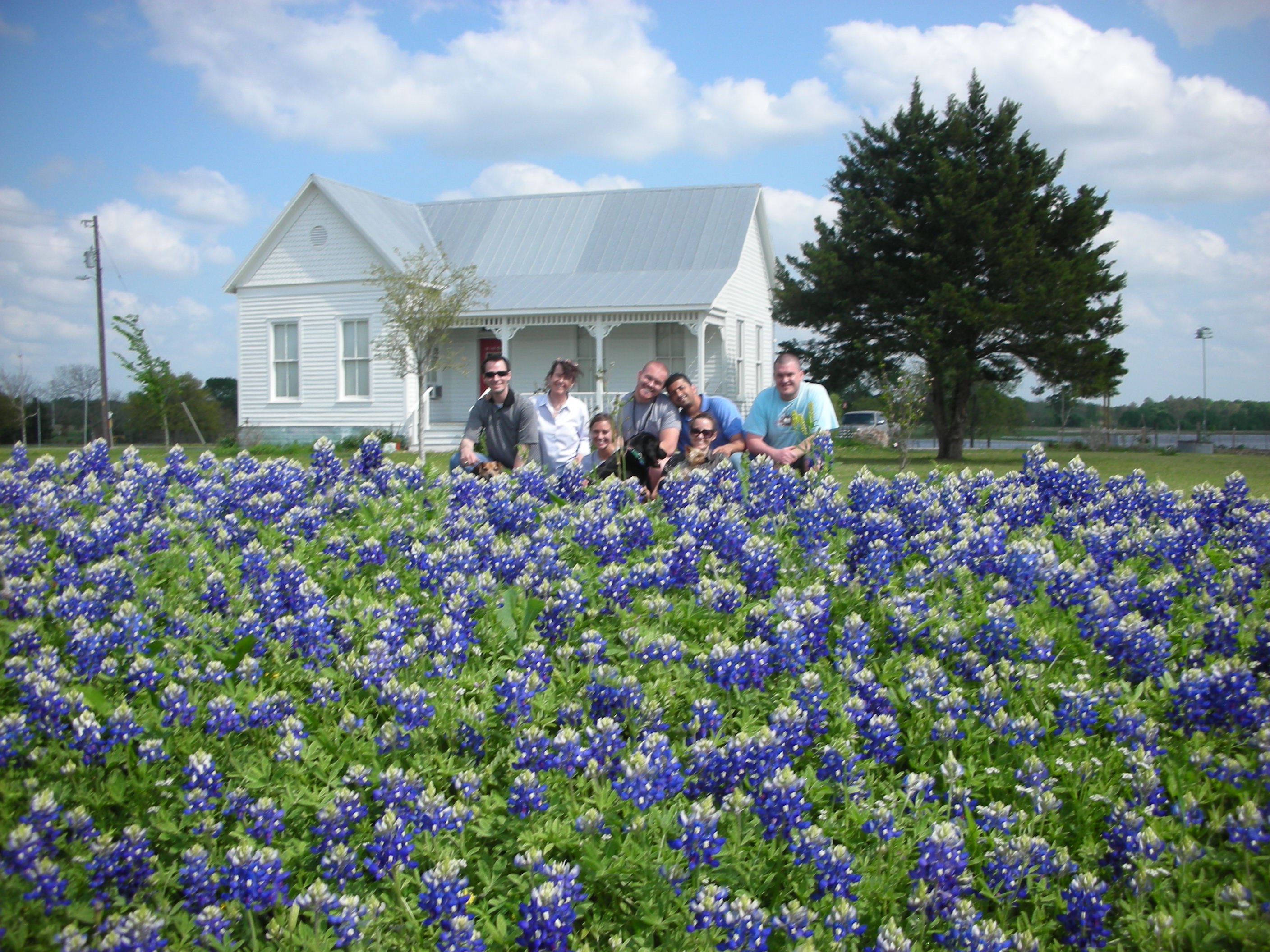
Bluebonnets and Indian Paintbrushes in the Yupneck's yard. Photo by Ramez Antoun
“The bluebonnet is to Texas what the shamrock is to Ireland, the cherry blossom to Japan, the lily to France, the rose to England and the tulip to Holland.”
That quote from Jack Maguire comes closer to describing the way we Texans feel about our state flower than anything else I have ever read. The bluebonnet is as much a symbol of Texas as is the Alamo or the Texas flag. The bluebonnet was selected as our state flower in large part because it is uniquely Texan. The two most common varieties (Lupinis texensis and Lupinis subcarnosus) grow natively here and nowhere else. This plant is so well loved that each year, millions of Texans load up their cars with kids and camera equipment and head out into the country. I truly believe that no one in Texas has ever avoided being photographed in a field of bluebonnets.

A yupneck family picture in our bluebonnets
I am fortunate enough to live in one of the best bluebonnet counties in Texas. I live on two long, skinny, Washington county acres. Because of the shape of my property I have about 600’ of road frontage. My wife has worked very hard to ensure that every inch of that 600’ is covered in bluebonnets. I am pleased to say, she has succeeded! In fact, she has been so successful that we have actually come home and found complete strangers in our yard taking pictures.

The Farmall Cub that I bought to mow the dead bluebonnet foliage
While bluebonnets are definitely the most fabulous native flower ever created, they do have their problems. Unless you have ever grown bluebonnets you may not be aware of what happens after the blooms fade. Bluebonnet foliage can grow to about 2’ in height. After they set seed the foliage and the seed pods begin to dry out and die. This creates a very unattractive, “weedy” look in the yard. However, no matter how bad it looks, you cannot mow them until the seed pods “shatter” and release their seeds. Mow too soon and you will not have bluebonnets next year. This “weedy” appearance in the yard requires very patient and very understanding neighbors. Luckily for us, the people of Washington County are serious about their bluebonnets and no one would ever complain about our “seeding” bluebonnets (at least not to our faces). One the bright side, the dry bluebonnet clumps are so thick and hard they almost ruined our John Deere riding mower. So, in order to save the John Deere from the bluebonnets, my wife let me buy a 1946 Farmall cub with a shredder to handle this once a year job.

A slightly blurry but very cute picture of my wife in our bluebonnets
If you want some bluebonnets of your own, they are very easy to grow. Just throw some seeds out in your yard in October or November. Timing is everything. They must go out at this time if you want them in the spring. Bluebonnets have a relatively low germination rate. So, to increase your success rate, mow your grass very close to the ground before sowing. Once you have spread the seed, walk around on them and try and ensure that they have good contact with the soil. Water them in. After watering, you can forget about them until spring. Only apply supplemental water if you do not receive average fall and winter rainfall. Bluebonnets are very drought tolerant (they are a Texas native after all). Over watering will kill them quicker than anything.
This weekend, my wife and I found the first bluebonnet flower in our yard. Because of this, I am pleased to announce that Bluebonnet season is here again. It is time to enjoy some of the best weather and scenery that Texas has to offer. So, load up your kids, drive out in the country and make your kids endure the same spring rituals that your parents made you endure. They will thank you later.
P.S. Don’t go onto other people’s property without asking. If you do, you may get to experience another Texas tradition – shooting trespassers! Happy Spring Y’all!!!!





















